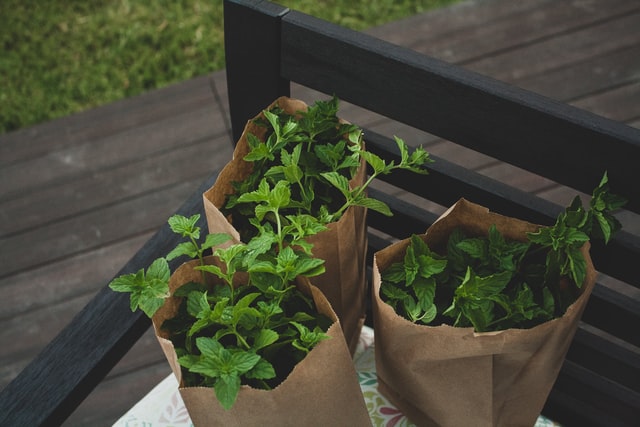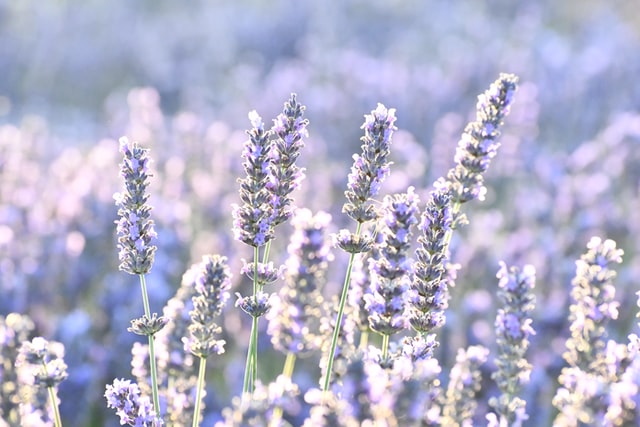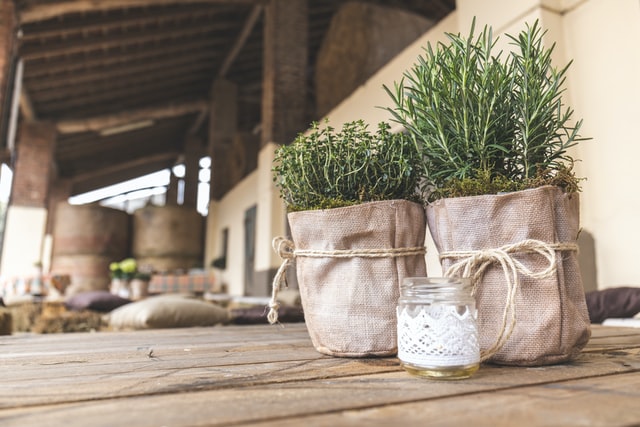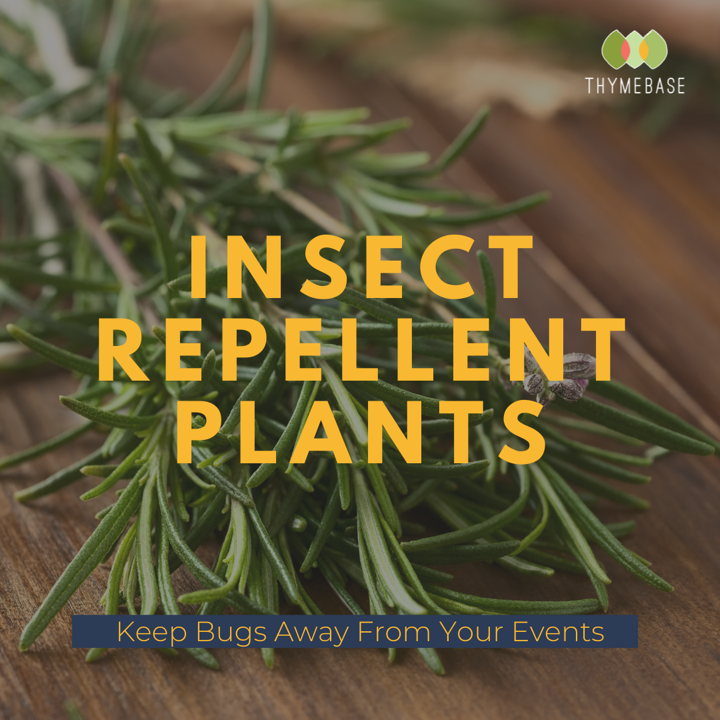Insect repellent plants are an environmentally friendly way to minimize bugs at both indoor and outdoor events and add some greenery at the same time.
Insects are found everywhere and tend to be particularly pesky. Causing problems in homes, gardens and any business really. Getting rid of them can be just as much of a mission, and the methods used to deter them aren’t always the most healthy when it comes to the environment.
Insecticides are useful but unspecific. That means that when you use an insecticide to get rid of your pests, they tend to kill all other insects, even the necessary ones. The death of these insects causes secondary damage to the environment due to removing the predators and competitors of the original pest. It may also cause a decline in pollinators, which has many repercussions, especially in the flower and farming businesses. So we want to share a few insect repellent plants that can be planted at your venue, outside and inside, in a pot placed near a sunny area.
Related: Four Effective Ideas For Planning An Eco-Friendly Music Festival
Peppermint

This fresh, strong-smelling plant is not only a nice touch to a glass of water but is also a natural repellent for spiders, mosquitoes, and ants. The reason why this is so repellent to spiders is due to its very aromatic nature.
Mint plants contain an iridoid called nepetalactones. This acts as a repellent to insects but an attractant to cats in catnip. Mint is a very invasive plant, though, so our advice would be to plant it in a container if you don’t want it to overrun your garden.
Basil

A beloved culinary herb, this is not a tricky plant to grow. With insects such as mosquitoes, repellents work by confusing their senses. The sensors in mosquitoes are found on their back legs, and when chemicals produced by plants are in the air, these sensors become slightly confused. Basil contains four compounds that mess with the mosquito sensors, specifically nerolidol, citronella, limonene, and estragole ( also known as tarragon).
Lemongrass

With its prominent scent, it is no wonder that insects tend to avoid this plant. It is a valuable addition to any area that struggles with mosquitoes, flies, fleas, or ticks.
Containing the compounds citronellal, citronellol, 2-undecanone, and geraniol, it is a potent repellent. As a plant that is considered an oil plant, it packs a punch. If you have it in your garden, making your own Lemongrass essential oils is even possible. The essential oil being a more potent and even more volatile version of the plant, this might not be such a bad idea.
Marigold

A flower! So not only will your venue, workspace, or home be insect-free there will also be splashes of color to add to the general aesthetic of your surroundings. Say goodbye to mosquitoes and aphids. The scent of marigold is caused by its naturally occurring active ingredient, pyrethrin. This is an ingredient that many a lab has mimicked and is commonly used in synthetic repellents. We just call the compounds pyrethroids now because they are pyrethrin resembling compounds.
Lavender

This plant has more to it than a scent in soaps and creams. Lavender repels insects from moths to fleas, flies, and mosquitoes because it contains the alcohol terpenoid linalool. That’s the main contributor to its heady scent. The release of this terpenoid is what repels insects. Studies have found that linalool diffusers did repel 93% of mosquitoes. So not only a pretty addition to any space but also helpful.
Rosemary

As any cook will tell you, a single twig from this plant can fill an entire kitchen with its distinctive smell. It also adds a wonderful taste to any dish. If you have pets or animals that bring in unwelcome visitors, such as fleas and ticks, this might be a good idea.
Rosemary contains chemical compounds such as eucalyptol and camphor, so no wonder it is such an effective repellent. Eucalyptol is the compound that makes up 90% of eucalyptus oil and is responsible for that minty, fresh, and spicy smell. Eucalyptus oil on its own is an effective and widely used insect repellent. Camphor, the other terpenoid found in rosemary, is the same as in the camphor tree – the tree from which camphor is extracted and then burnt as an insect repellent.
Related: Floriography And The Meaning Behind Wedding Flowers
There Are Other Insect Repellant Plants To Try
Of course, many other insect repellent plants. The Eucalyptus tree, for one, is very effective. The problem is it is only indigenous to Australia and very invasive. So the use of eucalyptus oil might be a better call. Rose Geraniums, Sandalwood, Thyme, and Lemon are all natural repellents with different benefits and levels of efficiency. For now, we have given you a starting point from which you and your plants can grow.
Whether you’re a venue owner, venue coordinator, or event pro, ThymeBase’s event professional software can help you work together with fewer emails.

